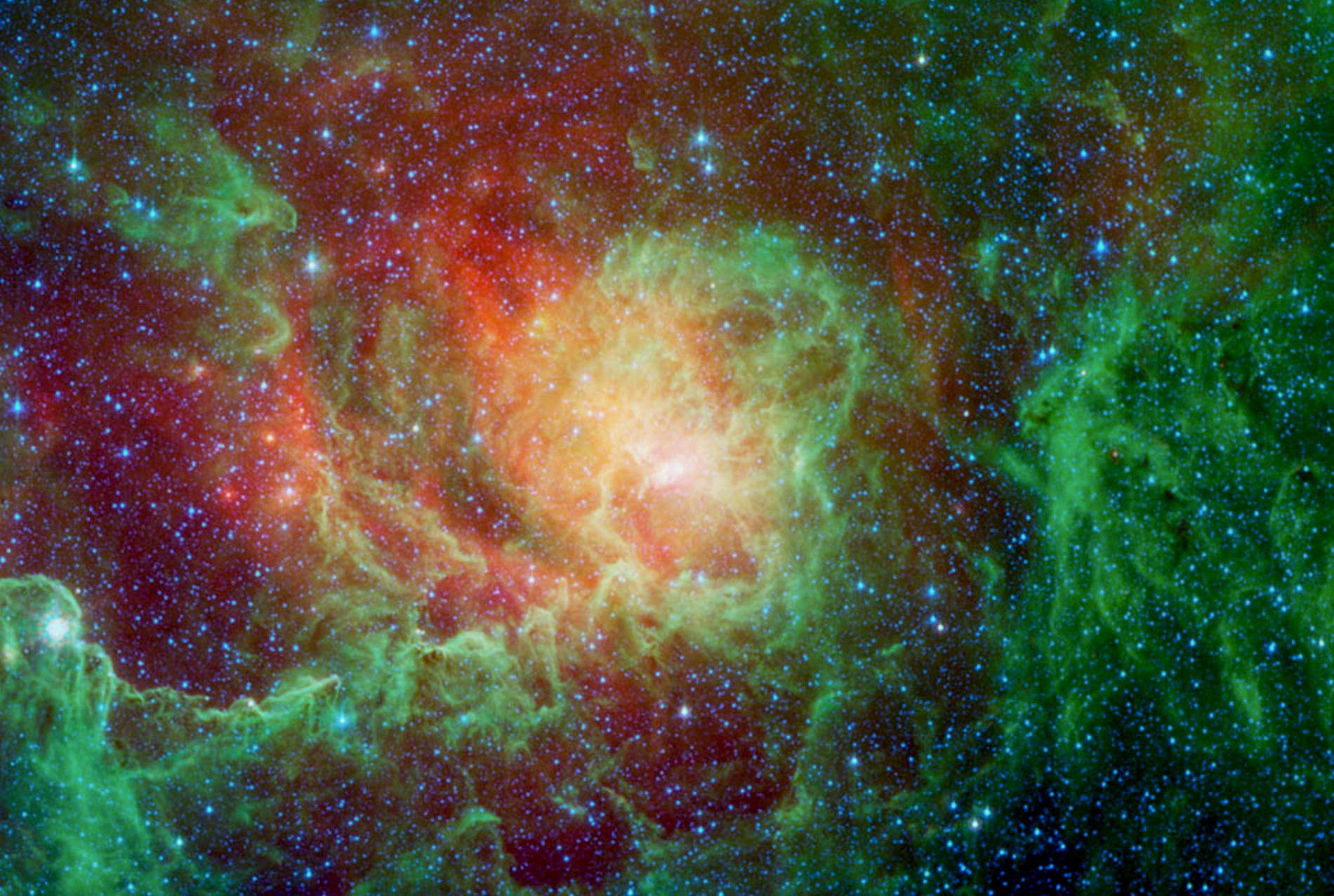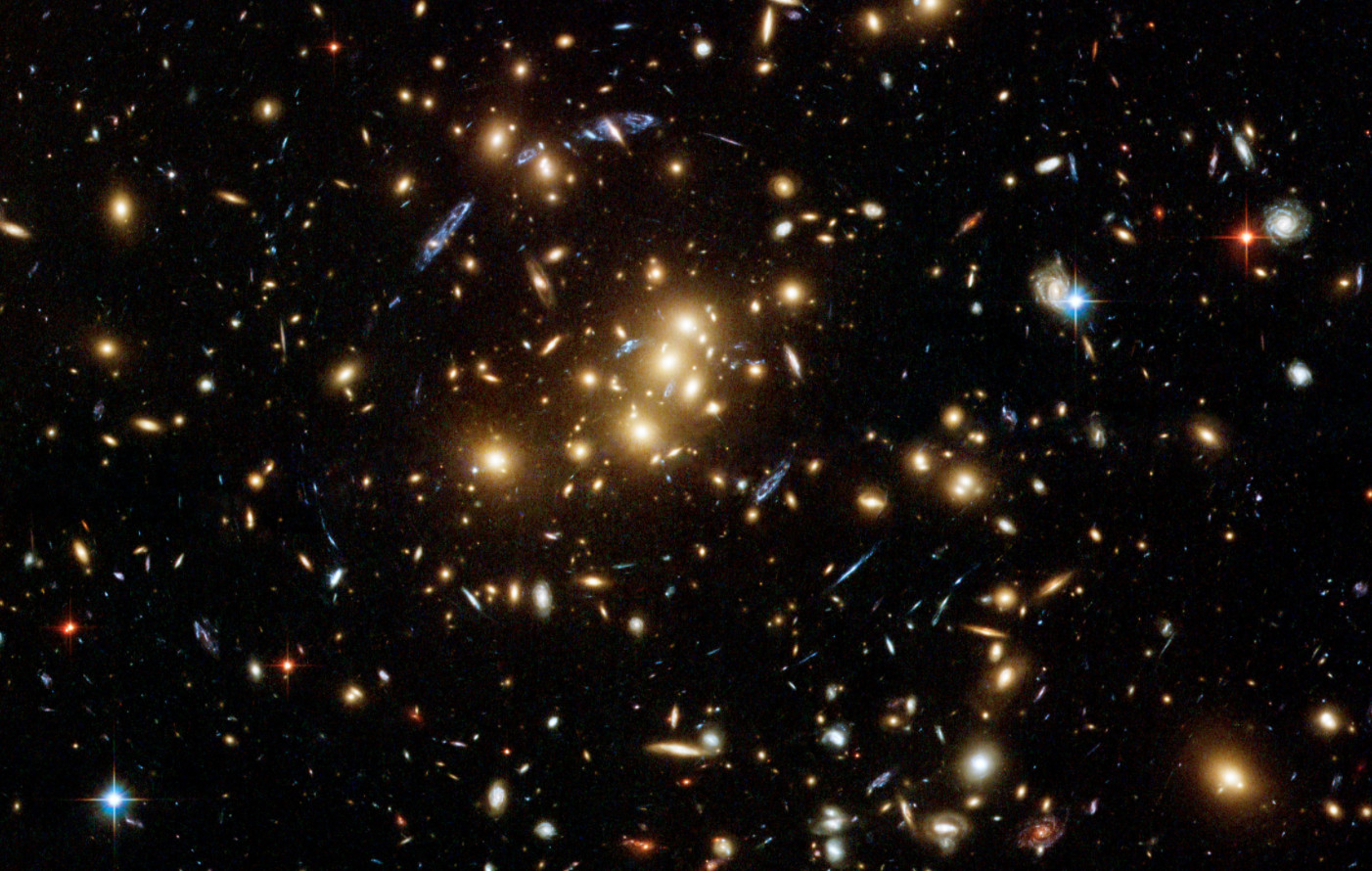
Sciences & Technology
Catching sight of dark matter

Around 95 per cent of the universe is still a mystery with unknown exotic particles and new forces awaiting discovery
Published 22 December 2020
Throughout human history, we have built an incredible body of knowledge about the universe around us.
We have devised beautiful mathematical formulae that describe the cosmos at its most fundamental level. We have powerful telescopes that can see very old galaxies and the beginnings of new ones.

We know how the universe began, yet the data we have amassed in both particle physics and astronomy tells us that we still only know about a tiny fraction of the universe.
Looking at the sky, we observe that on the largest scales, matter is organised into galaxies and clusters of galaxies.
Galaxies contain stars, planets and gases. All the visible universe – the Earth, Sun, stars and galaxies, everything that makes ‘us’ – is made of protons, neutrons and electrons bundled together into atoms.

Sciences & Technology
Catching sight of dark matter
Physicists have developed an impressive body of knowledge about the fundamental particles and forces that characterise the ordinary matter around us.
Centuries of discovery have shown that apples fall from trees for the same reason that the Earth orbits the Sun, and that the Earth is not at the centre of the universe.
It is a simple and elegant picture.
The quest to answer the most basic questions about the universe has reached a singular moment. Astrophysical and cosmological observations have revealed that our picture of the universe is incomplete.

Perhaps one of the most surprising discoveries of the twentieth century was that ordinary matter makes up less than five per cent of the mass of the universe.
The rest of the universe appears to be made of a mysterious, invisible substance named dark matter (25 per cent), and a force that repels gravity known as dark energy (70 per cent).
The exotic unknown substance named dark matter doesn’t appear to absorb, reflect or emit light, rendering it ‘invisible’.

Sciences & Technology
The dark matter detective
Since dark matter interacts very weakly with normal matter, its existence is inferred due to its gravitational effects on galaxies. Its fingerprints appear only when we look to the sky at the galactic and super-galactic scales, at about 10 million times the distance between the Earth and the Sun.
According to physics, stars at the edges of a spinning, spiral galaxy should travel much more slowly than those near the galactic centre, where a galaxy’s visible matter is concentrated. But our observations show that stars orbit at almost the same speed regardless of their distance from the centre of the galaxy.
This puzzling result only makes sense if we assume that the boundary stars are feeling the gravitational effects of an unseen mass, a halo of dark matter enveloping the galaxy.
The existence of dark matter could also explain some optical illusions that astronomers see in the deep universe. For example, there are pictures displaying strange rings and arcs of light.

These can be explained if the light from distant galaxies is distorted and magnified by massive, invisible clouds of dark matter, in a phenomenon known as gravitational lensing.
The radical conclusion that the universe is filled with invisible and nearly undetectable matter can be compared to Copernicus’s identification that the Earth is not the centre of the solar system – we have established that we don’t know what most of the universe is made of.
Just like ordinary matter, dark matter also originated from the big bang.

Sciences & Technology
Finding dark matter in the dark
The amount of dark matter produced in the big bang has influenced the evolution of our universe.
Similar to ordinary matter, dark matter isn’t distributed across the universe evenly. Areas of the universe that had slightly more dark matter, and so more gravitational pull, attracted more matter, leading to the creation of the first stars and galaxies.
The cosmic web we observe today is a snapshot of the dark matter distribution in the early universe – this mysterious dark matter acted as a hidden hand guiding the growth of galaxies.
Exploration of this unknown ‘new’ universe necessitates the discovery of the laws of physics underpinning the fundamental particle nature of dark matter. While astrophysical observations study the macroscopic properties of the universe to infer the existence of dark matter, terrestrial physics experiments are essential to study its quantum properties and consequently the fundamental laws of nature associated to dark matter.

One leading hypothesis is that dark matter is made up of exotic particles that don’t interact much with ordinary matter but are massive and therefore exert a gravitational pull.
Under this assumption, we can derive some of the characteristics of dark matter.
Cosmological measurements indicate that it is ‘cold’ – that is, the dark matter particles are heavy and move around the galaxy very slowly, much slower than the speed of light.

Sciences & Technology
Riding the gravitational wave
Dark matter very rarely interacts with normal matter and is invisible to light and other forms of electromagnetic radiation, making it impossible to detect with current instruments. To build scientific instruments in order to ‘see’ dark matter, we need to hypothesise about what dark matter is.
Most dark matter has probably been in existence since the first instant of the universe, outdating all atoms that make up visible matter. Earth is perpetually flying through a diffuse cloud of this mysterious substance.
We face a constant shower of dark matter particles – every second, hundreds of thousands of dark matter particles zip through our bodies. However, dark matter particles interact so weakly that they pass right through us, leaving almost no sign of their visit.
Looking at the density of dark matter throughout the universe, scientists calculate that of the thousands of dark matter particles passing through a human body every second, only about a dozen of them will collide with atoms in the body each year.

We cannot say what dark matter is until we can study it in a terrestrial laboratory. However, our very limited knowledge about the particle nature of dark matter makes building machines to discover it very challenging.
That is an adventure on its own.
Sometimes, very rarely indeed, a dark matter particle will collide with the nucleus of an atom, which can be detected in carefully designed direct detection experiments.
The expected number of collisions of massive dark matter particles with nuclei of suitable detector materials is very small – less than one collision a year per kilogram of material.

Sciences & Technology
The next big scientific thing
These collisions are so rare that on the Earth’s surface they are drowned out by the billions of cosmic ray–induced collisions that occur in the same kilogram of material each day.
Looking for the signal produced by dark matter collisions is therefore like looking for a needle in a haystack.
The only way to reduce the cosmic ray–induced collisions to a level where dark matter collisions are detectable is to place our discovery machines in deep underground sites where we can use the overlying rock layers (or ‘overburden’) as a shield against cosmic ray radiation.
About one kilometre underground, far from the cosmic ray–induced particles, our discovery machines are waiting to catch dalliances of these elusive cosmic messengers with ordinary matter. From the depths of a mine shielded from cosmic rays, we can get a glimpse of one of the deepest mysteries of the universe.

Experimental particle physics allows humankind to explore the secret of the universe at its fundamental level and to build machines that will enable this exploration.
We have come to understand the fundamental building blocks of ordinary matter, and what we know of the universe is only a tiny fraction of what is out there.
We know only five per cent of the universe. The remaining 95 per cent is still a mystery – an unknown universe of new particles and forces awaits discovery.
Even if these unknown particles and forces are, at present, invisible to us, they have shaped the universe as we see it today. We are taking part in not only a scientific revolution, but also a revolution in how human beings see the universe.
This article is an edited extract titled “Exploring the most unknown universe” first published in the NGV Triennial 2020 publication by the National Gallery of Victoria, Melbourne. The University of Melbourne is the proud Research Partner to the NGV Triennial which runs to 18 April 2021.
Banner: Getty Images